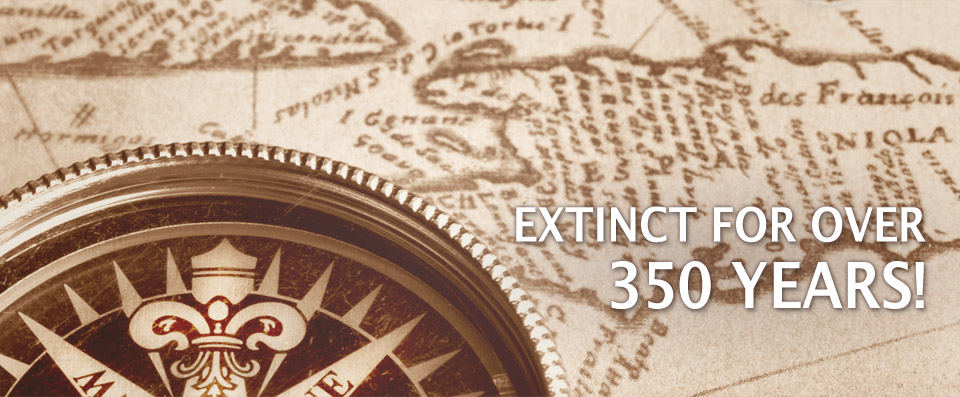
The first documented appearance of the dodo bird is in the early 15th century by Dutch explorers. Dutch vice-admiral Wybrand Van Warwijck used the name “walgyogel” in his journal to describe the bird after his visit to the island of Mauritius in 1598. The origins of word dodo to describe the bird is still unclear, but some ascribe it to the Dutch word dodoaars referring to the birds knot of feathers. Even though the Portuguese visited the island first in 1507, no records show of them mentioning the bird. But, according to the Portuguese dictionary, the word “dodo” is derived from doido meaning “fool” or “crazy”.
In 2005 , an international team of researchers excavated the remains of dodo birds at the city of Mare Aux Songes on the island of Mauritius. A number of bone remains were found, and from this expedition scientists at the Oxford University of Natural History and Dublin’s Natural History Museum were able to assemble specimens of the bird from the disassociated remains.
A Dutch painter, Roelant Savery, composed some of the earliest drawings of the dodo bird depicting bird to be gray color, with small wings, a 9 inch bill with hocked point, stout yellow legs and with a tuft of curly feathers high on the bird’s rear end. Even though the dodos were small birds of only 40 pounds and 3 feet tall, their sternum was insufficient to support flight. As a result, dodo birds were ground nesting birds who feed on fruit and utilized the island’s ecosystem without any predators.
Even though the original drawing of the bird portrayed dodo’s as fat and clumsy, scientists have challenged that view. Because the island of Mauritius has dry and wet seasons, dodo birds gained weight at the end of the wet season and slimed down when food was scarce during the dry season of the island. This developed the dodo birds’ image as a “greedy” bird with a large appetite. Most of the birds portrayed in drawing were probably captive, overfed dodos.
Because the dodo bird’s natural environment lacked any significant predators, dodos were fearless of people. This, combined with flightlessness, made them an easy prey. With combination of human hunting and becoming prey for animals brought onto the island by the explorers (i.e. dogs, cats, pigs, and rats) dodo birds became extinct in late 17th century.
Upon the initial extinction, very few took notice of the bird. In the early 19th century, scientific interest in the dodo bird was rekindled after some evidence of the bird was found in the swamp on its native island. Also, the use of dodo bird as a character in the Lewis Carroll’s Alice’s Adventures in Wonderland sparked interest in the dodo bird with the general public. Since then, multiple films, cartoons and other media have used dodo birds as an example of an extinct species.
In July 2007, scientists found a best yet preserved dodo bird skeleton to date. Besides being the most accurate and preserved specimen of the extinct species, scientists were able to extract a sample DNA. Prior to this the only other DNA sample available came from a skeleton brought to Britain in 15th-century when dodo's were newly extinct. The new DNA sample allowed scientists to further determine the bird's characteristics and its relationship with other birds. Also the findings of the new DNA sample raises the new questions: Could the scientists resurrect the dodo bird from extinctions and should they?